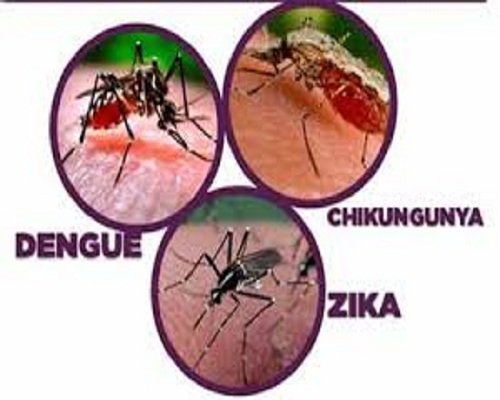Arboviruses are diseases caused by viruses that affect man and are transmitted by mosquitoes.
Until now, we do not have vaccines that can eliminate these diseases, such as: yellow fever, sika, chikungunya and dengue.
I propose to address the dengue virus, of which the existence of 4 serotypes is known, characterized by an un-segmented single-stranded RNA virus, with different antigenic properties. Dengue viruses 3 and 4 are responsible for the epidemics with the highest number of serious cases and deaths.
Epidemics usually arise in any place where vectors exist (Aedes Aegypti mosquito and other types) and the virus is introduced, both in urban and rural areas. The outbreaks generally occur in summer associated with the rainy season, since it is in the water reservoirs where the females lay their eggs.
For the outbreak to occur, the epidemiological triad must be present, that is, the patient, the transmitting mosquito and the susceptible host, if we isolate the sick and control the vector (mosquito) we are then in a position to prevent people from getting sick.
The mosquito’s habitat is pre domestic, the most common breeding sites are used tires, water tanks, buckets, empty containers, plant pots, vases with water, tree holes, empty boxes, animal drinkers, eggshells , and any object that stores water inside. Its flying area is between 200 and 300 meters but it can travel by transport to more distant places.
In Cuba the first epidemic was in 1977, the second in 1981, when 118 people died, including 101 children, the third occurred in 1997 where 12 people all over 16 years of age died.
Dengue virus infection can be asymptomatic or with few symptoms that sometimes go unnoticed. The main symptoms that may appear accompanied or alone are coryza, conjunctivitis, acute onset of fever, headache, pain behind the eyes, muscle or joint pain.
Other symptoms can sometimes be solitary skin rash, chest and arms, loss of appetite and taste, nose bleeds and gum bleeding (in the gums), abdominal pain and diarrhea are signs of complication.
The complementary tests, together with the clinical manifestations, allow health professionals to suspect the disease, but only the IgE and IgM serological tests, between the sixth and seventh day, allow a definitive diagnosis and they are performed in Cuba in the Pedro Kuri Institute (IPK) located in Havana.
To talk about treatment, we must first divide it into preventive measures, general measures, and drug treatment.
Preventive measures are those aimed at education on personal and environmental hygiene (avoiding mosquito breeding sites), protection with repellants, mosquito nets, metal screens on the windows and the application of insecticides and fumigation.
We speak of general measures when we refer to admissions to isolation centers or hospitals according to severity, search for cases and sources of infection, search for feverish cases, destruction and treatment of mosquito breeding sites.
Pharmacological treatment is aimed initially and in mild cases, to relieve symptoms, bed rest, under the mosquito net, plenty of fluids, and to supply pain and fever medications, never aspirin. In severe cases, the goal is to preserve hydration and combat coagulation disorders.


